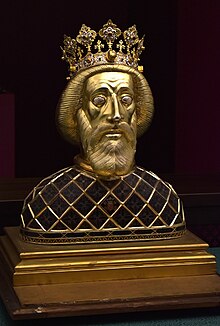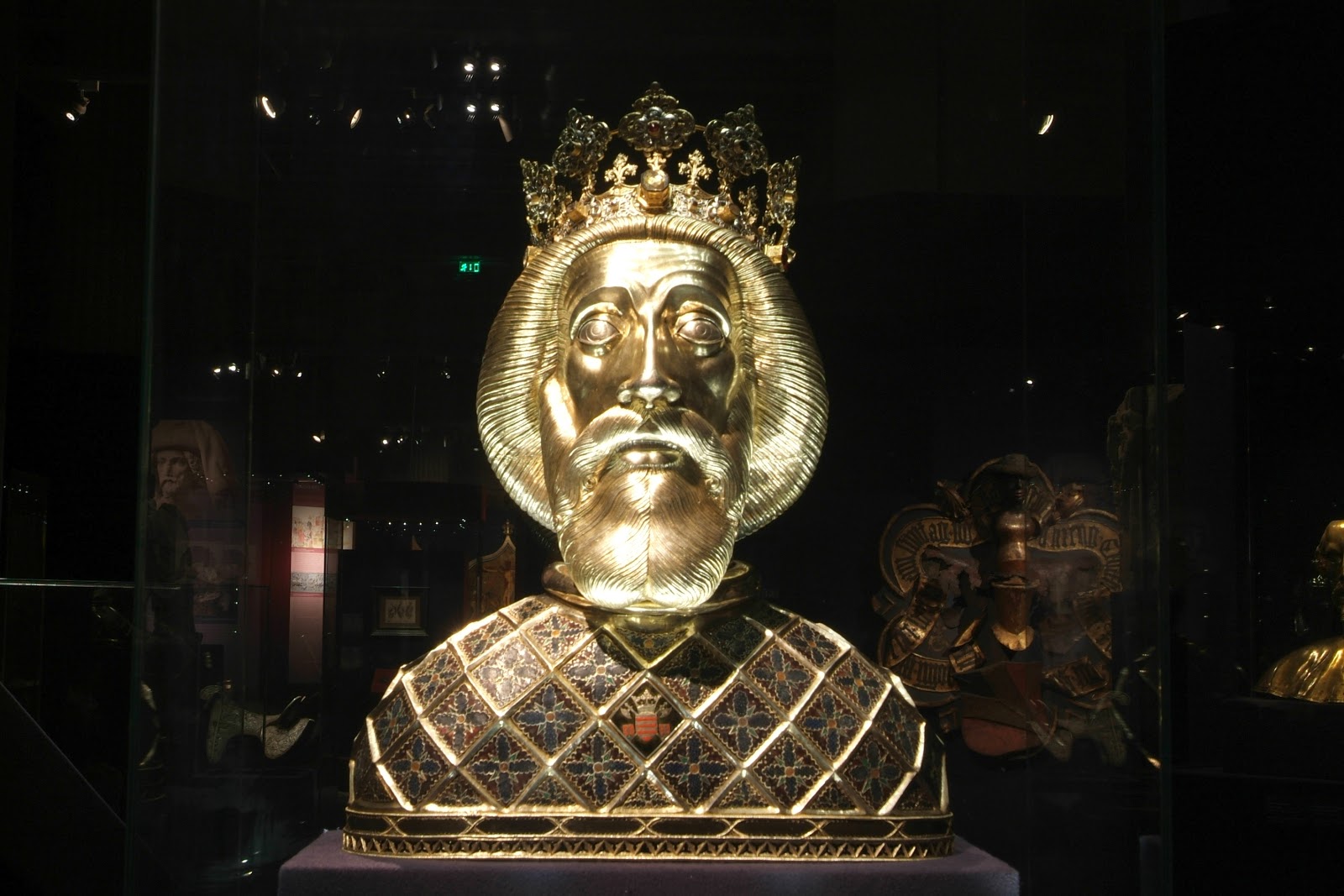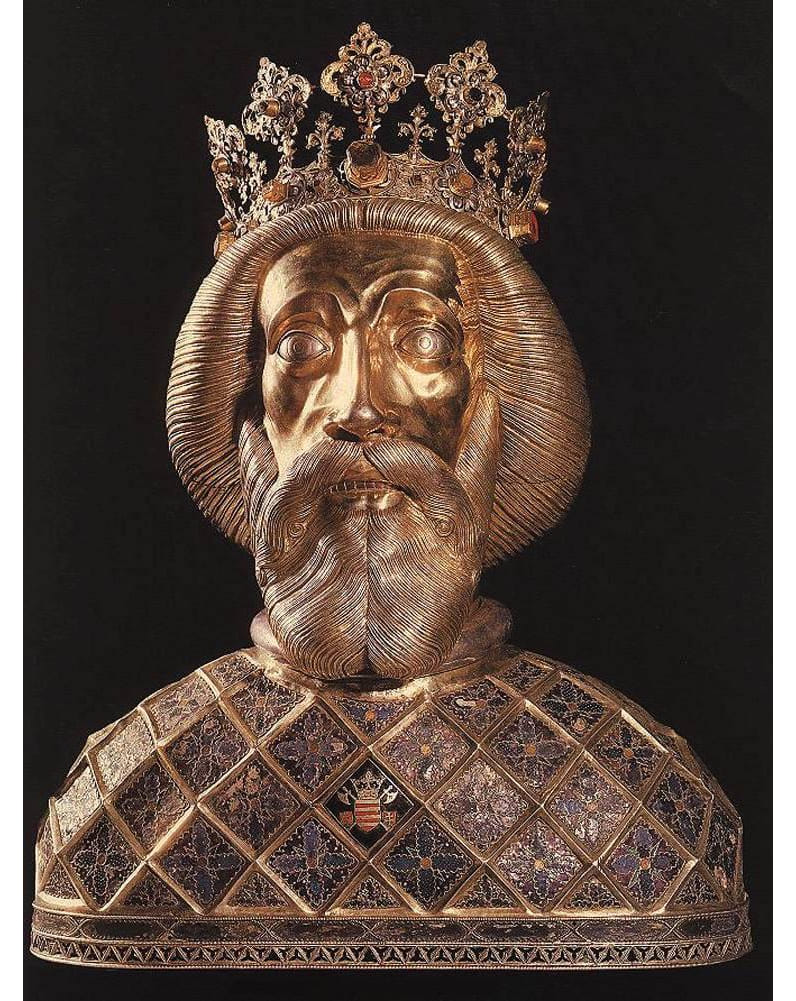Saint László’s Herma: Revered Medieval Hungarian Relic

Nestled within the venerable Cathedral of Győr, Hungary, resides a precious artifact that embodies both religious devotion and artistic craftsmanship: the Herma of Saint László, King of Hungary. Crafted from gilded silver in the early 15th century, this herma serves as a reliquary containing the revered head relic of Saint László, a pivotal figure in Hungarian history and Christian piety.
Saint László, known for his piety, courage, and dedication to the Christian faith, reigned as King of Hungary from 1077 until his death in 1095. His legacy as a righteous ruler and defender of Christianity earned him widespread veneration both during his lifetime and in subsequent centuries. The herma, created around 1400-1425, was commissioned to replace an earlier version destroyed before 1405, affirming the enduring reverence for Saint László among the Hungarian faithful.

The herma’s design is a testament to the skill of medieval silversmiths and the spiritual significance attributed to relics in medieval Christian practice. Standing as a cylindrical container adorned with intricate filigree and religious iconography, it exudes an aura of sanctity and reverence. The gilded silver surface reflects the flickering candlelight of the cathedral, enhancing its mystical allure and drawing worshippers into contemplation and prayer.
Central to the herma’s purpose is its role as a reliquary housing the head relic of Saint László. Relics, believed to embody the spiritual presence of saints and martyrs, held profound importance in medieval Christian worship. Pilgrims and devotees would journey to Győr Cathedral to seek spiritual solace and blessings through the intercession of Saint László, whose remains were believed to possess miraculous powers.

The herma’s presence within Győr Cathedral not only underscores the city’s historical and religious significance but also highlights the continuity of Hungarian religious traditions and cultural heritage. It stands as a tangible link to the medieval era, preserving the memory of Saint László’s enduring legacy and his impact on the spiritual life of Hungary.
Moreover, the herma of Saint László exemplifies the convergence of artistry and religious devotion in medieval Europe. Its intricate craftsmanship and symbolic richness speak to the deep-seated faith and artistic sophistication of the era, offering a window into the spiritual world of medieval Hungarians and their reverence for saintly relics.
In conclusion, the Herma of Saint László in Győr Cathedral remains a cherished relic of medieval Hungary, symbolizing the enduring legacy of Saint László and the spiritual heritage of the Hungarian people. Through its exquisite design and sacred purpose, it continues to inspire awe and reverence, inviting all who encounter it to reflect on the intersection of faith, history, and artistic expression in the medieval world.










